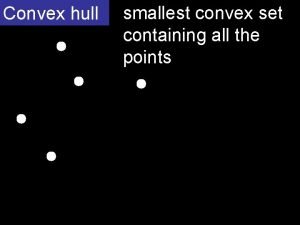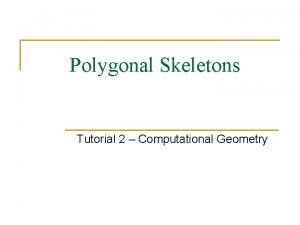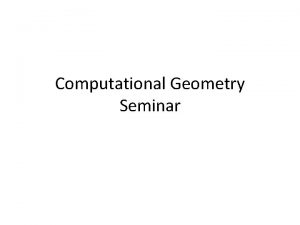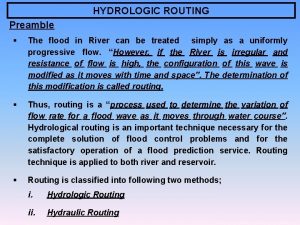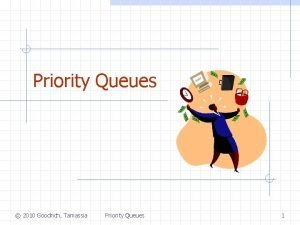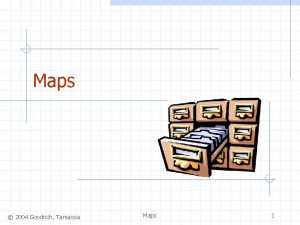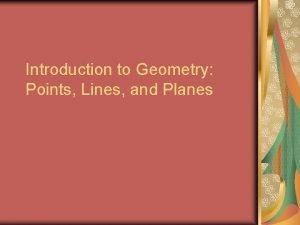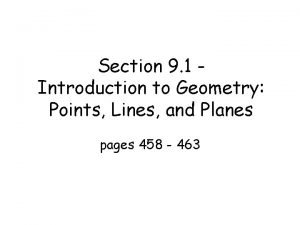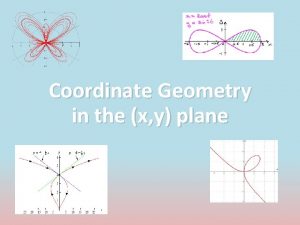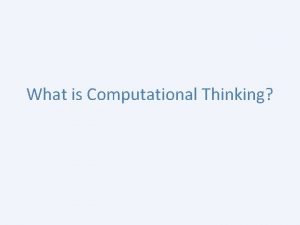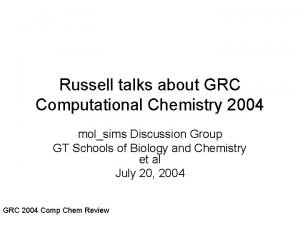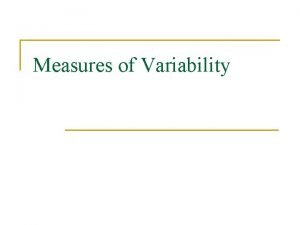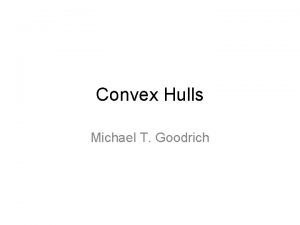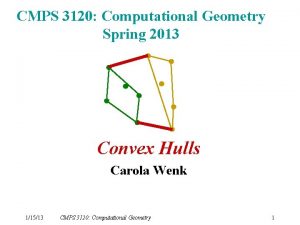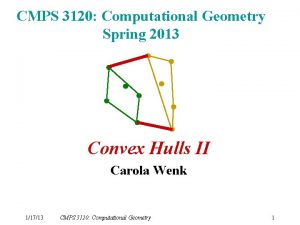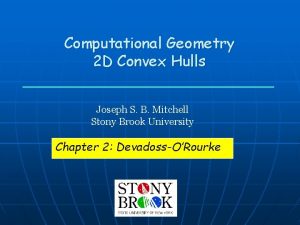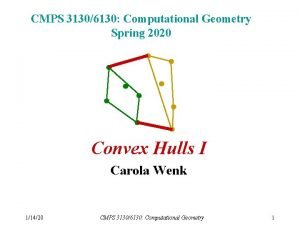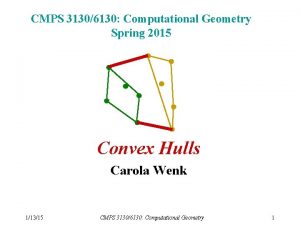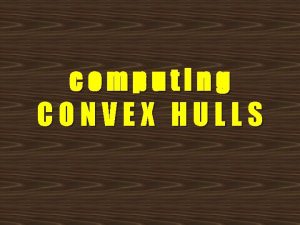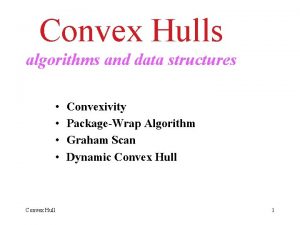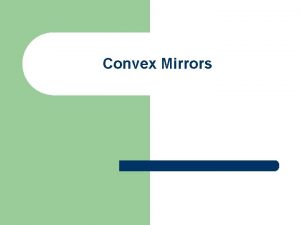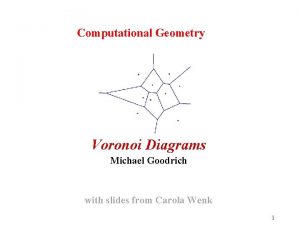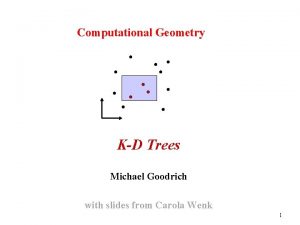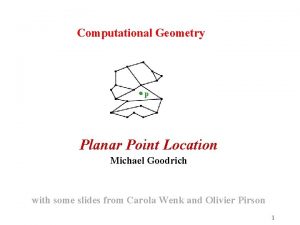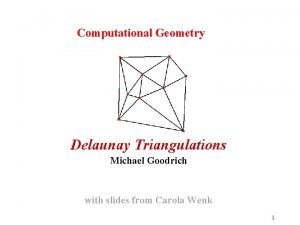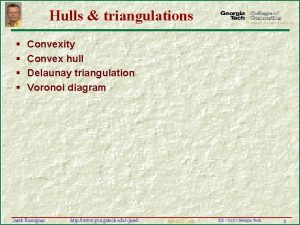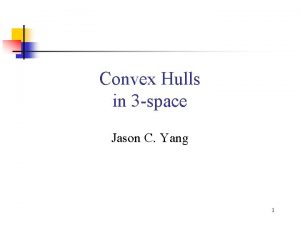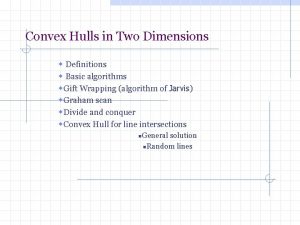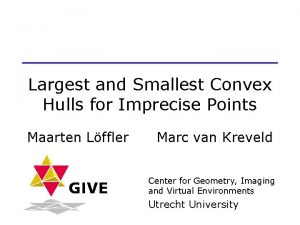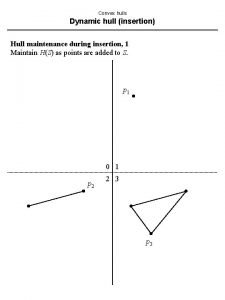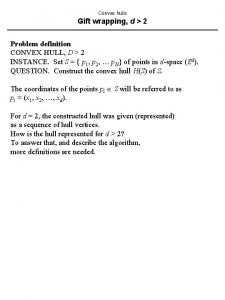Computational Geometry Michael T Goodrich Introduction Convex Hulls























- Slides: 23

Computational Geometry Michael T. Goodrich Introduction Convex Hulls

Definition • Computational geometry involves the design, analysis and implementation of efficient algorithms for solving geometric problems, e. g. , problems involving points, lines, segments, triangles, polygons, etc.

Application: Location Data

Application: Science

Application: Geographic Information Systems (GIS)

Application: Solid Modeling

Application: Computer Graphics

Application: Motion Planning and Robotics

Application: Shape Analysis and Computer Vision

Convexity

Convex hull • Smallest convex set containing all n points

Convex hull • Smallest convex set containing all n points

Useful Primitives • Sidedness

Useful Primitives • Orientation test: right turn or left turn

Computing Orientations

A First Convex Hull Algorithm

Degeneracies

Dealing with Degeneracies • Assume input is in general position and go back later to deal with degeneracies

Robustness • Computing geometric primitives can introduce errors, e. g. , if computations are done using floating point

Floating Point Numbers are not exact

Dealing with Robustness • Assume all arithmetic is exact. – Can be simulated using floating point filters, which we might discuss later if there is time – Gives rise to a computational model known as the Real RAM

Real RAM Model • Not:

Real RAM Model • A “Random Access Machine”: – – a stored program a computer memory: an array of cells a central processing unit Each memory cell or register can store a real number. • Allowed operations include addition, subtraction, multiplication, and division, as well as comparisons. • Some people also include things like square-roots and rounding to integers, but this is sometimes considered “cheating”. • When analyzing algorithms for the real RAM, each allowed operation is typically assumed to take constant time.
 Hulls drive theory
Hulls drive theory Hull's landing menu
Hull's landing menu Pinwheels and polygons
Pinwheels and polygons Convex hull is the smallest convex set
Convex hull is the smallest convex set Straight skeleton
Straight skeleton Computational geometry
Computational geometry Reservoir and channel routing
Reservoir and channel routing Heidi goodrich andrade
Heidi goodrich andrade Afge local 910
Afge local 910 Goodrich method flood routing
Goodrich method flood routing Goodrich tamassia
Goodrich tamassia Goodrich tamassia
Goodrich tamassia Molecular geometry of pf3
Molecular geometry of pf3 4 electron domains 2 lone pairs
4 electron domains 2 lone pairs This molecule is
This molecule is Points lines and planes geometry
Points lines and planes geometry Section 1 introduction to geometry answers
Section 1 introduction to geometry answers Coordinate geometry introduction
Coordinate geometry introduction Characteristics of computational thinking
Characteristics of computational thinking Computational thinking algorithms and programming
Computational thinking algorithms and programming Grc computational chemistry
Grc computational chemistry Using mathematics and computational thinking
Using mathematics and computational thinking Usc neuroscience
Usc neuroscience Standard deviation computational formula
Standard deviation computational formula



